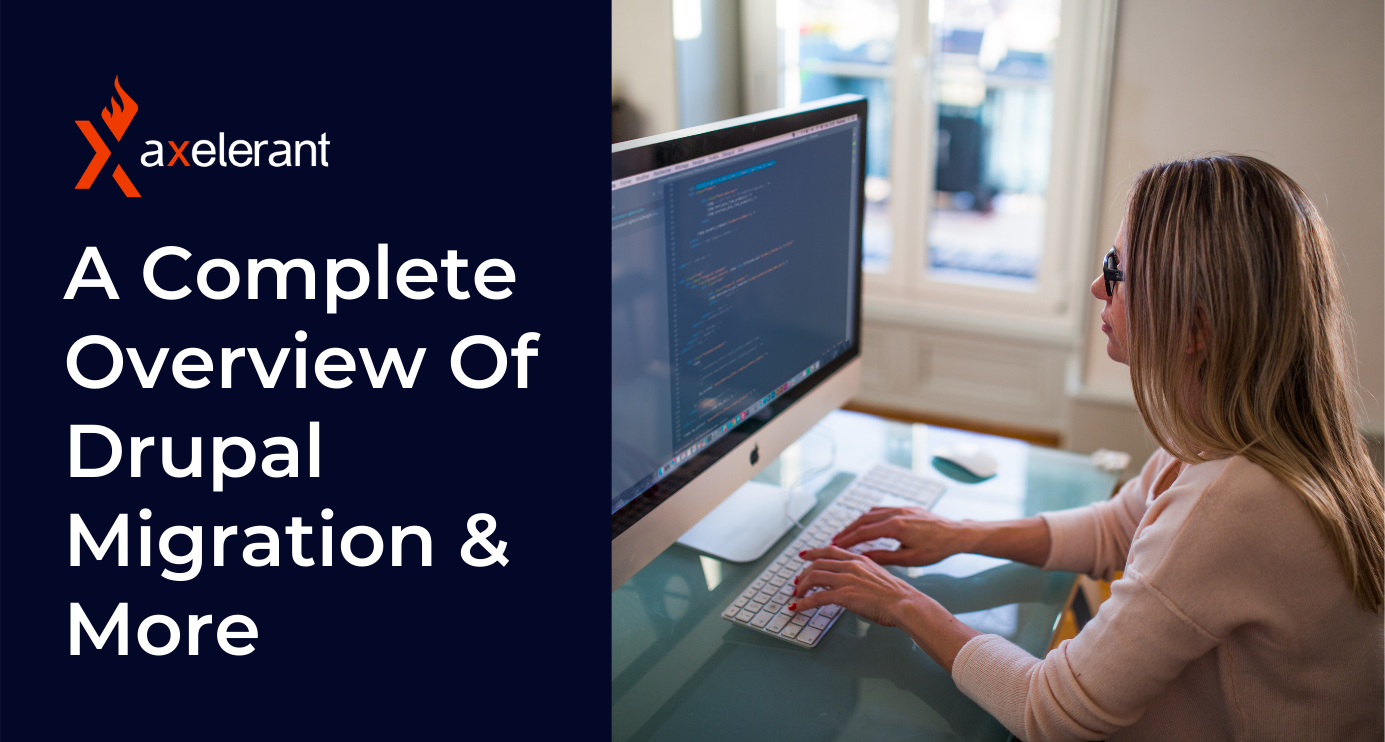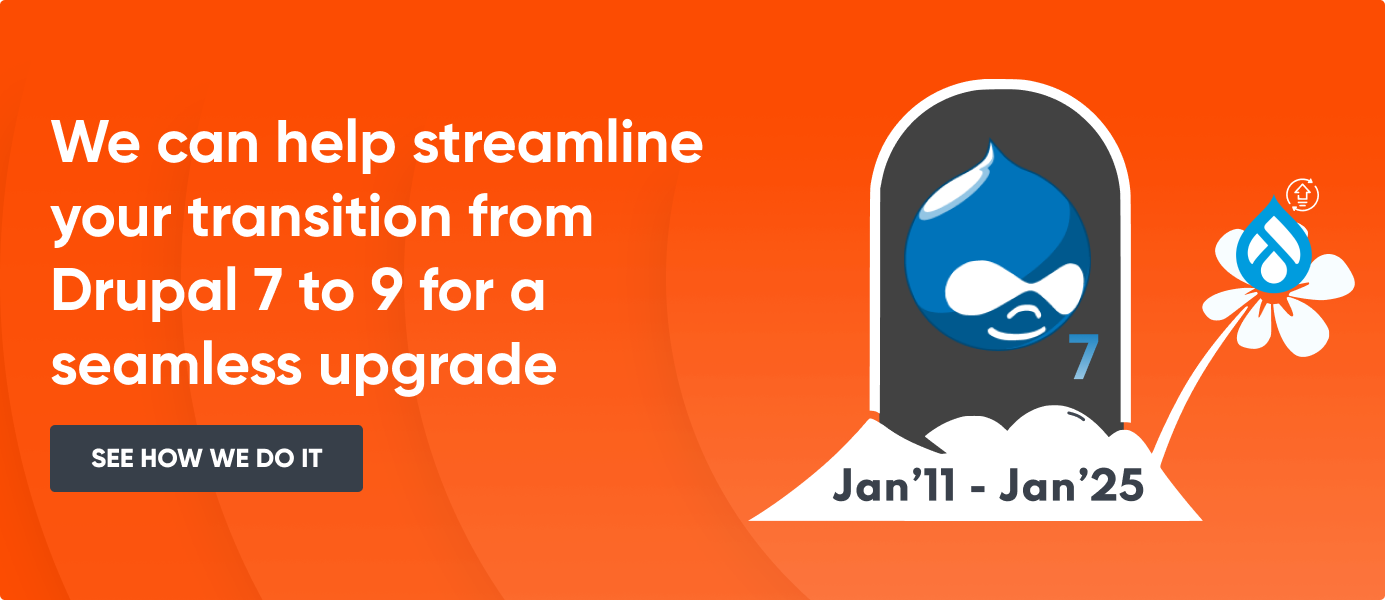Introduction
With the launch of Drupal 9 in June 2020, the topic of Drupal migration is fresh on everyone’s mind. We will be delving deeper into the nitty-gritty around the topic in this blog.
Migration is the process where the content from the old site, converted into the desired format and is saved in the new site. Sometimes, migration is a simple activity of mapping the source content to the destination content types, and sometimes, it is a bit more complicated.
Let's take a comprehensive look at the Drupal migration process in context to the recently launched Drupal 9, and what’s involved in migrating from different versions.
Drupal 9 is here, and regardless of being on Drupal 7 or 8, you can start preparing to upgrade. Find out how the migration process will affect your site and how to prepare!
Drupal 7, 8, and 9
Drupal has earned a reputation as a great choice for enterprise-level websites and web applications for providing the best customer digital experiences. Drupal 7 was launched in 2011, and its improved JavaScript and CSS optimization made it so popular that a large number of businesses are still on it.
Introduction of Drupal 8
Drupal 8 was introduced with numerous benefits, boasting extensive support for accessibility standards, with Semantic HTML5 that creates more usable interactions and adopts more WAI-ARIA practices, and much more.
Find out what to look for in Drupal 9 based on what we saw during the Drupal 8 journey and why migrate to the latest release.
Drupal 8 also said goodbye to PHPTemplate and rely on readable code when theming with Twig. However, these technical advancements came with a bit of a migration challenge.
The Transition
It’s no secret that the migration process from Drupal 7 to 8 involved a number of challenges. Many questioned the need to migrate from Drupal 6/7 as they were hesitant about the migration process itself. The community has taken a huge leap in the migration process from Drupal 7 to Drupal 9.
Read about the importance of migrating to Drupal 9 for Drupal 6 & 7 users and the consequences of not migrating to Drupal 8 before its end-of-life.
The infamous Drupal 7 to 8 migration challenged teams' technical capabilities and relied on the business priorities too. However, the Drupal 8 to 9 migration has no such hassles. If you are at the latest version of Drupal 8, then transitioning to Drupal 9 is very similar to a minor upgrade.
Migrating Then and Now
The most important part of migration is planning and preparing. As a business, you should be able to assess the feasibility of performing a successful migration. To give an overview, it starts with analyzing your source data, managing important files and content, lots of testing, and so on.
The community recommends updating the core to the latest version available to ensure the site’s security and uninterrupted functioning. Using the dependency manager for PHP, Composer, you can update and install packages (modules) in Drupal.
 — Hussain Abbas
|
The Drupal migration framework supports a variety of sources and the ability to specify custom sources and destinations. |
Drupal to Drupal Migration
While moving your Drupal 6/7 site to Drupal 8, most of your time would be spent working in the Migration or Migration Group config. Also, you’d want to declare the different Process Plugins to be used and the Destination Plugins for all of the core entity types included in Drupal core.
Drupal has reached the highest level of scalability and efficiency with object-oriented code, the latest PHP standards, more unified APIs to add power to your site.
The entire Drupal 8/9 content migration process is also a brief series of easy steps and offers greater flexibility to tweak the content architecture.
Learn the importance of data and how to execute the content migration with a plan and available modules.
Migration from external sources
If you are on a non-Drupal CMS, like WordPress, then the process starts with Setup Migrate Demo Site and Source Data for data migration. The well structured Drupal 8 makes the execution easier and manageable. An average Drupal developer will have no issue understanding the database structures of both sites, and they can write a series of SQL queries that copy the content from any non-Drupal database to the Drupal database.
Also, there are contributed modules to migrate your non-Drupal website to Drupal. For example, the Migrate API provides services for migrating data from a source system to Drupal 8. Even the Drupal theming is a breeze now with the new Twig template engine.
What’s More?
Drupal 7 and Drupal 8 are reaching end-of-life in November 2021 and 2022, respectively. This will leave Drupal 9 as the standalone version in the community with support. It won’t be too long before Drupal 10 makes an entry after that, so do make sure you complete your migration well in time.
Read about how we migrated millions of content items to Drupal for Lonely Planet. Axelerant team members helped familiarize Lonely Planet’s team with Drupal 8 migration best practices and streamline the migration process.


 We respect your privacy. Your information is safe.
We respect your privacy. Your information is safe.




Leave us a comment